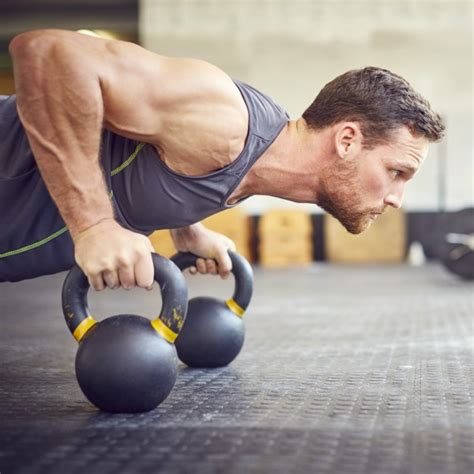What’s the most efficient workout split for peak performance & growth?

Cracking the Code: Finding Your Optimal Workout Split
In the quest for peak physical performance and consistent muscle growth, one of the most debated topics among fitness enthusiasts and professionals alike is the ‘workout split.’ A workout split refers to how you organize your training sessions throughout the week, determining which muscle groups you train on which days. The truth is, there’s no single, universally ‘best’ split, as efficiency is highly individual and depends on numerous factors including your experience level, recovery capacity, time commitment, and specific goals. However, understanding the most common splits and their underlying principles can help you identify the most efficient path for your personal journey.

Understanding the Science of Training Frequency and Volume
Before diving into specific splits, it’s crucial to grasp the concepts of training frequency and volume. Frequency refers to how often a muscle group is trained within a given week, while volume is the total amount of work performed (sets x reps x weight). For optimal muscle hypertrophy and strength gains, research generally suggests that hitting each muscle group 2-3 times per week, with adequate volume and intensity, is more effective than training it only once a week. This allows for sufficient stimulus for growth while also providing enough recovery time.
Popular Workout Splits and Their Efficiency
1. Full Body Split (2-4 Days/Week)
This split involves training all major muscle groups in each session. It’s often recommended for beginners due to its high frequency and lower per-session volume, allowing for excellent skill acquisition and overall muscle stimulus. For more advanced lifters, it can still be highly effective, especially when focused on compound movements and progressive overload. Recovery between sessions is ample, as you’re typically not hitting the same muscle group two days in a row.
2. Upper/Lower Split (4 Days/Week)
The upper/lower split divides your training into two distinct days: one for all upper body muscles and one for all lower body muscles. Typically done twice a week (e.g., Upper, Lower, Rest, Upper, Lower, Rest, Rest), this split offers a good balance of frequency (each muscle group twice a week) and volume per session. It allows for more focused work on each body part than a full-body split without the excessive duration of some body part splits.

3. Push/Pull/Legs (PPL) Split (3-6 Days/Week)
A highly popular and effective split, PPL categorizes exercises by movement pattern: Push (chest, shoulders, triceps), Pull (back, biceps), and Legs (quads, hamstrings, glutes, calves). A common setup is to cycle through Push, Pull, Legs, Rest, and then repeat, training each muscle group twice a week. This split allows for high training frequency and can accommodate significant volume, making it excellent for both hypertrophy and strength. It’s particularly efficient for those who can commit to 6 days a week, effectively training each muscle group twice with plenty of volume.

4. Body Part Split (Bro Split) (3-5 Days/Week)
In a body part split, each major muscle group is typically trained once per week (e.g., Chest Monday, Back Tuesday, Legs Wednesday, etc.). While popular in bodybuilding circles, especially for advanced lifters focusing on extreme volume for one muscle group, research suggests its lower frequency might be less optimal for overall growth compared to splits that hit muscles 2-3 times a week, especially for beginners and intermediates. However, it can be effective for advanced lifters who can induce significant damage in one session and require longer recovery, or for those who simply enjoy the focus it provides.

Key Principles for Maximizing Performance & Growth
Regardless of your chosen split, the following principles are paramount:
- Progressive Overload: Continuously challenge your muscles by increasing weight, reps, sets, or decreasing rest times. Without this, growth will stagnate.
- Consistency: Adherence to your chosen routine over time is more important than the ‘perfect’ split you can’t stick to.
- Recovery: Adequate sleep, nutrition (especially protein), and active rest are crucial for muscle repair and growth.
- Volume and Intensity: Ensure your total weekly volume for each muscle group is sufficient (typically 10-20 working sets for hypertrophy) and that you’re training with adequate intensity (close to failure).
- Individualization: Listen to your body. What works for one person might not work for another. Adjust your split based on how you recover and respond.

Choosing Your Optimal Split
The ‘most efficient’ split is ultimately the one that aligns best with your lifestyle, allows for consistent progressive overload, and supports adequate recovery. If you’re new to lifting or short on time, a full-body or upper/lower split might be ideal. If you can commit to 4-6 days a week and want to maximize frequency and volume for specific muscle groups, the PPL split is an excellent choice. For advanced lifters with excellent recovery and specific aesthetic goals, a body part split can still be effective.
Don’t be afraid to experiment. Start with a split, adhere to it for 8-12 weeks, track your progress, and then evaluate. If you’re seeing consistent gains in strength and muscle, you’re on the right track. If not, consider adjusting your split, volume, or intensity.







